-
Executive Summary
-
Market Introduction
-
Market Definition 24
-
Scope Of The Study 24
-
List Of
-
Assumptions 24
-
Market Structure 25
-
Market Insights
-
Market Insights 27
-
Research Methodology
-
Research Process 31
-
Primary Research 32
-
Secondary
-
Research 33
-
Market Size Estimation 33
-
Forecast Model
-
Market Dynamics
-
Introduction 36
-
Drivers
- Increasing Demand For Silicone-Based Adhesives In The Manufacturing
- Rapid Development In The Internet Of Things
- Increasing Use Of Wearable Smart Glasses 39
-
Of Wearable Devices 37
-
(IoT) Technology 38
-
Restraint 40
- Increasing Cost Of Wearable Devices Due
-
To Technological Advancements 40
-
Opportunities 41
- Increasing Application Of Wearable Devices In Numerous End-Use Industries
-
Development Of Wearable Smart Safety Helmets For The Mining Industry 41
-
Trends 41
- Innovation In Adhesive Materials Used
-
In The Manufacturing Of Medical Wearable Devices 41
-
Market Factor Analysis
-
Supply Chain Analysis 43
- Raw Material Suppliers 43
- Wearable Device Display Materials Manufacturers 44
- End-Use Industries 44
-
Distribution Channel 44
-
Porter’s
- Threat Of New Entrants 45
- Threat Of Substitutes 45
- Bargaining Power Of Buyers 45
-
Five Forces Model 44
-
Threat Of Rivalry 45
-
Bargaining Power Of Suppliers 45
-
Market Price Analysis 2020-2027
-
Global Wearable
-
Device Display Materials Market, By Substrates
-
Introduction 49
-
Glass 50
-
Fiber 51
-
Polycarbonates 52
-
Others 54
-
Global Wearable Device Display Materials Market,
-
By Adhesives
-
Introduction 56
-
Silicone 57
-
Epoxy 58
-
Acrylic 59
-
Polyurethane 60
-
Others 62
-
Global Wearable Device Display Materials Market, By
-
Coatings
-
Introduction 64
-
Parylene 66
-
Superhydrophobic 67
-
Piezoresistive 68
-
Conductive
-
Others 70
-
Global Wearable Device Display Materials
-
Market, By End-Use Industry
-
Introduction 73
-
Smart
-
Glass 74
-
Smart Watches 75
-
Wearable Cameras 77
-
Fitness Trackers 78
-
Others 79
-
Global
-
Wearable Device Display Materials Market, By Region
-
Introduction
-
North America 88
- US 92
- Canada
-
Europe 101
- Germany 106
- France
- UK 113
- Italy 117
- Russia
- Spain 125
- The Netherlands 129
- Poland 137
- Rest Of Europe 141
-
Belgium 133
-
Asia-Pacific 146
- China 151
- Japan
- India 159
- South Korea 163
- Thailand 171
- Malaysia
- Indonesia 179
- Rest Of Asia-Pacific 183
-
Australia And New Zealand 167
-
Latin America 187
- Mexico 191
- Brazil
- Argentina 199
- Rest Of Latin America 203
-
Middle East And Africa 208
- Turkey 213
- UAE 221
- Saudi Arabia 225
- Israel 228
- North Africa 232
- Rest
-
South Africa 217
-
Of Middle East And Africa 236
-
Competitive Landscape
-
Introduction 242
-
Market Strategy Analysis 242
-
Company
-
Profiles
-
BASF SE 245
- Company Overview 245
- Financial Overview 245
- Products Offered 246
- Key Developments 246
- SWOT Analysis 246
-
Key Strategies 246
-
DowDuPont 247
- Company Overview
- Financial Overview 247
- Products Offered
- Key Developments 248
- SWOT Analysis 249
- Key Strategies 249
-
Wacker Chemie AG 250
- Company Overview 250
- Financial Overview 250
- Products Offered 251
- Key Developments 251
- Key Strategies 251
-
SWOT Analysis 251
-
Arkema SA_x005F_x000B_
- Company Overview 252
- Financial Overview
- Products Offered 253
- Key Developments 253
- SWOT Analysis 253
- Key Strategies 253
- Company Overview 254
- Financial Overview
- Products Offered 255
- Key Developments 255
- SWOT Analysis 255
- Key Strategies 256
- Company Overview 257
- Products Offered 258
- SWOT Analysis 258
- Key Strategies
-
3M 254
-
Eastman Chemical Company 257
-
Financial Overview 257
-
Key Developments 258
-
Solvay 259
- Company Overview 259
- Products Offered 260
- SWOT Analysis 260
- Key Strategies
-
Financial Overview 259
-
Key Developments 260
-
Covestro AG 261
- Company Overview 261
- Financial Overview 261
- Products Offered 262
- Key Developments 263
- SWOT Analysis 263
-
Key Strategies 263
-
Henkel AG & Co. KGaA 264
- Financial Overview 264
- Key Developments 265
- SWOT
- Key Strategies 266
-
Company Overview 264
-
Products Offered 265
-
Analysis 266
-
Master Bond Inc
- Company Overview 267
- Financial Overview
- Products Offered 267
- Key Developments
- SWOT Analysis 268
- Key Strategies 268
-
Conclusion
-
Key Findings 270
-
-
List Of Tables
-
MARKET SYNOPSIS 22
-
LIST
-
OF ASSUMPTIONS 24
-
GLOBAL WEARABLE DEVICE DISPLAY MATERIALS MARKET
-
PRICING (USD/TON) (2020–2027) 47
-
GLOBAL WEARABLE DEVICE
-
DISPLAY MATERIALS MARKET, BY SUBSTRATES, 2020‒2027 (USD MILLION) 49
-
TABLE
-
GLOBAL WEARABLE DEVICE DISPLAY MATERIALS MARKET, BY SUBSTRATES, 2020‒2027 (KILO
-
TONS) 50
-
GLASS: GLOBAL WEARABLE DEVICE DISPLAY MATERIALS MARKET,
-
BY REGION, 2020‒2027 (USD MILLION) 51
-
GLASS: GLOBAL WEARABLE
-
DEVICE DISPLAY MATERIALS MARKET, BY REGION, 2020‒2027 (KILO TONS) 51
-
TABLE
-
FIBER: GLOBAL WEARABLE DEVICE DISPLAY MATERIALS MARKET, BY REGION, 2020‒2027 (USD
-
MILLION) 52
-
FIBER: GLOBAL WEARABLE DEVICE DISPLAY MATERIALS MARKET,
-
BY REGION, 2020‒2027 (KILO TONS) 52
-
POLYCARBONATES: GLOBAL WEARABLE
-
DEVICE DISPLAY MATERIALS MARKET, BY REGION, 2020‒2027 (USD MILLION) 53
-
POLYCARBONATES: GLOBAL WEARABLE DEVICE DISPLAY MATERIALS MARKET, BY REGION,
-
OTHERS: GLOBAL WEARABLE DEVICE DISPLAY
-
MATERIALS MARKET, BY REGION, 2020‒2027 (USD MILLION) 54
-
OTHERS:
-
GLOBAL WEARABLE DEVICE DISPLAY MATERIALS MARKET, BY REGION, 2020‒2027 (KILO TONS)
-
GLOBAL WEARABLE DEVICE DISPLAY MATERIALS MARKET, BY ADHESIVES,
-
GLOBAL WEARABLE DEVICE DISPLAY MATERIALS
-
MARKET, BY ADHESIVES, 2020‒2027 (KILO TONS) 57
-
SILICONE: GLOBAL
-
WEARABLE DEVICE DISPLAY MATERIALS MARKET, BY REGION, 2020‒2027 (USD MILLION) 58
-
SILICONE: GLOBAL WEARABLE DEVICE DISPLAY MATERIALS MARKET, BY REGION,
-
EPOXY: GLOBAL WEARABLE DEVICE DISPLAY
-
MATERIALS MARKET, BY REGION, 2020‒2027 (USD MILLION) 59
-
EPOXY:
-
GLOBAL WEARABLE DEVICE DISPLAY MATERIALS MARKET, BY REGION, 2020‒2027 (KILO TONS)
-
ACRYLIC: GLOBAL WEARABLE DEVICE DISPLAY MATERIALS MARKET,
-
BY REGION, 2020‒2027 (USD MILLION) 60
-
ACRYLIC: GLOBAL WEARABLE
-
DEVICE DISPLAY MATERIALS MARKET, BY REGION, 2020‒2027 (KILO TONS) 60
-
TABLE
-
POLYURETHANE: GLOBAL WEARABLE DEVICE DISPLAY MATERIALS MARKET, BY REGION, 2020‒2027
-
(USD MILLION) 61
-
POLYURETHANE: GLOBAL WEARABLE DEVICE DISPLAY
-
MATERIALS MARKET, BY REGION, 2020‒2027 (KILO TONS) 61
-
OTHERS:
-
GLOBAL WEARABLE DEVICE DISPLAY MATERIALS MARKET, BY REGION, 2020‒2027 (USD MILLION)
-
OTHERS: GLOBAL WEARABLE DEVICE DISPLAY MATERIALS MARKET,
-
BY REGION, 2020‒2027 (KILO TONS) 62
-
GLOBAL WEARABLE DEVICE DISPLAY
-
MATERIALS MARKET, BY COATINGS, 2020‒2027 (USD MILLION) 64
-
GLOBAL
-
WEARABLE DEVICE DISPLAY MATERIALS MARKET, BY COATINGS, 2020‒2027 (KILO TONS) 65
-
PARYLENE: GLOBAL WEARABLE DEVICE DISPLAY MATERIALS MARKET, BY REGION,
-
PARYLENE: GLOBAL WEARABLE DEVICE
-
DISPLAY MATERIALS MARKET, BY REGION, 2020‒2027 (KILO TONS) 66
-
TABLE 30
-
SUPERHYDROPHOBIC: GLOBAL WEARABLE DEVICE DISPLAY MATERIALS MARKET, BY REGION, 2020‒2027
-
(USD MILLION) 67
-
SUPERHYDROPHOBIC: GLOBAL WEARABLE DEVICE DISPLAY
-
MATERIALS MARKET, BY REGION, 2020‒2027 (KILO TONS) 67
-
PIEZORESISTIVE:
-
GLOBAL WEARABLE DEVICE DISPLAY MATERIALS MARKET, BY REGION, 2020‒2027 (USD MILLION)
-
PIEZORESISTIVE: GLOBAL WEARABLE DEVICE DISPLAY MATERIALS
-
MARKET, BY REGION, 2020‒2027 (KILO TONS) 68
-
CONDUCTIVE: GLOBAL
-
WEARABLE DEVICE DISPLAY MATERIALS MARKET, BY REGION, 2020‒2027 (USD MILLION) 69
-
CONDUCTIVE: GLOBAL WEARABLE DEVICE DISPLAY MATERIALS MARKET, BY
-
REGION, 2020‒2027 (KILO TONS) 69
-
OTHERS: GLOBAL WEARABLE DEVICE
-
DISPLAY MATERIALS MARKET, BY REGION, 2020‒2027 (USD MILLION) 70
-
TABLE
-
OTHERS: GLOBAL WEARABLE DEVICE DISPLAY MATERIALS MARKET, BY REGION, 2020‒2027
-
(KILO TONS) 70
-
GLOBAL WEARABLE DEVICE DISPLAY MATERIALS MARKET,
-
BY END-USE INDUSTRY, 2020‒2027 (USD MILLION) 73
-
GLOBAL WEARABLE
-
DEVICE DISPLAY MATERIALS MARKET, BY END-USE INDUSTRY, 2020‒2027 (KILO TONS) 74
-
SMART GLASS: GLOBAL WEARABLE DEVICE DISPLAY MATERIALS MARKET, BY
-
REGION, 2020‒2027 (USD MILLION) 75
-
SMART GLASS: GLOBAL WEARABLE
-
DEVICE DISPLAY MATERIALS MARKET, BY REGION, 2020‒2027 (KILO TONS) 75
-
TABLE
-
SMART WATCHES: GLOBAL WEARABLE DEVICE DISPLAY MATERIALS MARKET, BY REGION, 2020‒2027
-
(USD MILLION) 76
-
SMART WATCHES: GLOBAL WEARABLE DEVICE DISPLAY
-
MATERIALS MARKET, BY REGION, 2020‒2027 (KILO TONS) 76
-
WEARABLE
-
CAMERAS: GLOBAL WEARABLE DEVICE DISPLAY MATERIALS MARKET, BY REGION, 2020‒2027 (USD
-
MILLION) 77
-
WEARABLE CAMERAS: GLOBAL WEARABLE DEVICE DISPLAY
-
MATERIALS MARKET, BY REGION, 2020‒2027 (KILO TONS) 77
-
FITNESS
-
TRACKERS: GLOBAL WEARABLE DEVICE DISPLAY MATERIALS MARKET, BY REGION, 2020‒2027
-
(USD MILLION) 78
-
FITNESS TRACKERS: GLOBAL WEARABLE DEVICE DISPLAY
-
MATERIALS MARKET, BY REGION, 2020‒2027 (KILO TONS) 78
-
OTHERS:
-
GLOBAL WEARABLE DEVICE DISPLAY MATERIALS MARKET, BY REGION, 2020‒2027 (USD MILLION)
-
OTHERS: GLOBAL WEARABLE DEVICE DISPLAY MATERIALS MARKET,
-
BY REGION, 2020‒2027 (KILO TONS) 79
-
GLOBAL WEARABLE DEVICE DISPLAY
-
MATERIALS MARKET, BY REGION, 2020‒2027 (USD MILLION) 83
-
GLOBAL
-
WEARABLE DEVICE DISPLAY MATERIALS MARKET, BY REGION, 2020‒2027 (KILO TONS) 84
-
GLOBAL WEARABLE DEVICE DISPLAY MATERIALS MARKET, BY SUBSTRATES,
-
GLOBAL WEARABLE DEVICE DISPLAY MATERIALS
-
MARKET, BY SUBSTRATES, 2020‒2027 (KILO TONS) 84
-
GLOBAL WEARABLE
-
DEVICE DISPLAY MATERIALS MARKET, BY ADHESIVES, 2020‒2027 (USD MILLION) 85
-
GLOBAL WEARABLE DEVICE DISPLAY MATERIALS MARKET, BY ADHESIVES, 2020‒2027
-
(KILO TONS) 85
-
GLOBAL WEARABLE DEVICE DISPLAY MATERIALS MARKET,
-
BY COATINGS, 2020‒2027 (USD MILLION) 86
-
GLOBAL WEARABLE DEVICE
-
DISPLAY MATERIALS MARKET, BY COATINGS, 2020‒2027 (KILO TONS) 86
-
TABLE
-
GLOBAL WEARABLE DEVICE DISPLAY MATERIALS MARKET, BY END-USE INDUSTRY, 2020‒2027
-
(USD MILLION) 87
-
GLOBAL WEARABLE DEVICE DISPLAY MATERIALS MARKET,
-
BY END-USE INDUSTRY, 2020‒2027 (KILO TONS) 87
-
NORTH AMERICA:
-
WEARABLE DEVICE DISPLAY MATERIALS MARKET, BY COUNTRY, 2020‒2027 (USD MILLION) 88
-
NORTH AMERICA: WEARABLE DEVICE DISPLAY MATERIALS MARKET, BY COUNTRY,
-
NORTH AMERICA: WEARABLE DEVICE DISPLAY
-
MATERIALS MARKET, BY SUBSTRATES, 2020‒2027 (USD MILLION) 88
-
TABLE 63
-
NORTH AMERICA: WEARABLE DEVICE DISPLAY MATERIALS MARKET, BY SUBSTRATES, 2020‒2027
-
(KILO TONS) 89
-
NORTH AMERICA: WEARABLE DEVICE DISPLAY MATERIALS
-
MARKET, BY ADHESIVES, 2020‒2027 (USD MILLION) 89
-
NORTH AMERICA:
-
WEARABLE DEVICE DISPLAY MATERIALS MARKET, BY ADHESIVES, 2020‒2027 (KILO TONS) 90
-
NORTH AMERICA: WEARABLE DEVICE DISPLAY MATERIALS MARKET, BY COATINGS,
-
NORTH AMERICA: WEARABLE DEVICE DISPLAY
-
MATERIALS MARKET, BY COATINGS, 2020‒2027 (KILO TONS) 91
-
NORTH
-
AMERICA: WEARABLE DEVICE DISPLAY MATERIALS MARKET, BY END-USE INDUSTRY, 2020‒2027
-
(USD MILLION) 91
-
NORTH AMERICA: WEARABLE DEVICE DISPLAY MATERIALS
-
MARKET, BY END-USE INDUSTRY, 2020‒2027 (KILO TONS) 92
-
US: WEARABLE
-
DEVICE DISPLAY MATERIALS MARKET, BY SUBSTRATES, 2020‒2027 (USD MILLION) 92
-
US: WEARABLE DEVICE DISPLAY MATERIALS MARKET, BY SUBSTRATES, 2020‒2027
-
(KILO TONS) 93
-
US: WEARABLE DEVICE DISPLAY MATERIALS MARKET,
-
BY ADHESIVES, 2020‒2027 (USD MILLION) 93
-
US: WEARABLE DEVICE
-
DISPLAY MATERIALS MARKET, BY ADHESIVES, 2020‒2027 (KILO TONS) 94
-
TABLE
-
US: WEARABLE DEVICE DISPLAY MATERIALS MARKET, BY COATINGS, 2020‒2027 (USD MILLION)
-
US: WEARABLE DEVICE DISPLAY MATERIALS MARKET, BY COATINGS,
-
US: WEARABLE DEVICE DISPLAY MATERIALS
-
MARKET, BY END-USE INDUSTRY, 2020‒2027 (USD MILLION) 95
-
US:
-
WEARABLE DEVICE DISPLAY MATERIALS MARKET, BY END-USE INDUSTRY, 2020‒2027 (KILO TONS)
-
CANADA: WEARABLE DEVICE DISPLAY MATERIALS MARKET, BY SUBSTRATES,
-
CANADA: WEARABLE DEVICE DISPLAY MATERIALS
-
MARKET, BY SUBSTRATES, 2020‒2027 (KILO TONS) 97
-
CANADA: WEARABLE
-
DEVICE DISPLAY MATERIALS MARKET, BY ADHESIVES, 2020‒2027 (USD MILLION) 97
-
CANADA: WEARABLE DEVICE DISPLAY MATERIALS MARKET, BY ADHESIVES, 2020‒2027
-
(KILO TONS) 98
-
CANADA: WEARABLE DEVICE DISPLAY MATERIALS MARKET,
-
BY COATINGS, 2020‒2027 (USD MILLION) 98
-
CANADA: WEARABLE DEVICE
-
DISPLAY MATERIALS MARKET, BY COATINGS, 2020‒2027 (KILO TONS) 99
-
TABLE
-
CANADA: WEARABLE DEVICE DISPLAY MATERIALS MARKET, BY END-USE INDUSTRY, 2020‒2027
-
(USD MILLION) 99
-
CANADA: WEARABLE DEVICE DISPLAY MATERIALS MARKET,
-
BY END-USE INDUSTRY, 2020‒2027 (KILO TONS) 100
-
EUROPE: WEARABLE
-
DEVICE DISPLAY MATERIALS MARKET, BY COUNTRY, 2020‒2027 (USD MILLION) 101
-
EUROPE: WEARABLE DEVICE DISPLAY MATERIALS MARKET, BY COUNTRY, 2020‒2027
-
(KILO TONS) 101
-
EUROPE: WEARABLE DEVICE DISPLAY MATERIALS MARKET,
-
BY SUBSTRATES, 2020‒2027 (USD MILLION) 102
-
EUROPE: WEARABLE
-
DEVICE DISPLAY MATERIALS MARKET, BY SUBSTRATES, 2020‒2027 (KILO TONS) 102
-
EUROPE: WEARABLE DEVICE DISPLAY MATERIALS MARKET, BY ADHESIVES, 2020‒2027
-
(USD MILLION) 103
-
EUROPE: WEARABLE DEVICE DISPLAY MATERIALS
-
MARKET, BY ADHESIVES, 2020‒2027 (KILO TONS) 103
-
EUROPE: WEARABLE
-
DEVICE DISPLAY MATERIALS MARKET, BY COATINGS, 2020‒2027 (USD MILLION) 104
-
EUROPE: WEARABLE DEVICE DISPLAY MATERIALS MARKET, BY COATINGS, 2020‒2027
-
(KILO TONS) 104
-
EUROPE: WEARABLE DEVICE DISPLAY MATERIALS MARKET,
-
BY END-USE INDUSTRY, 2020‒2027 (USD MILLION) 105
-
EUROPE: WEARABLE
-
DEVICE DISPLAY MATERIALS MARKET, BY END-USE INDUSTRY, 2020‒2027 (KILO TONS) 105
-
GERMANY: WEARABLE DEVICE DISPLAY MATERIALS MARKET, BY SUBSTRATES,
-
GERMANY: WEARABLE DEVICE DISPLAY
-
MATERIALS MARKET, BY SUBSTRATES, 2020‒2027 (KILO TONS) 106
-
GERMANY:
-
WEARABLE DEVICE DISPLAY MATERIALS MARKET, BY ADHESIVES, 2020‒2027 (USD MILLION)
-
GERMANY: WEARABLE DEVICE DISPLAY MATERIALS MARKET, BY ADHESIVES,
-
GERMANY: WEARABLE DEVICE DISPLAY
-
MATERIALS MARKET, BY COATINGS, 2020‒2027 (USD MILLION) 107
-
TABLE 101
-
GERMANY: WEARABLE DEVICE DISPLAY MATERIALS MARKET, BY COATINGS, 2020‒2027 (KILO
-
TONS) 108
-
GERMANY: WEARABLE DEVICE DISPLAY MATERIALS MARKET,
-
BY END-USE INDUSTRY, 2020‒2027 (USD MILLION) 108
-
GERMANY: WEARABLE
-
DEVICE DISPLAY MATERIALS MARKET, BY END-USE INDUSTRY, 2020‒2027 (KILO TONS) 109
-
FRANCE: WEARABLE DEVICE DISPLAY MATERIALS MARKET, BY SUBSTRATES,
-
FRANCE: WEARABLE DEVICE DISPLAY
-
MATERIALS MARKET, BY SUBSTRATES, 2020‒2027 (KILO TONS) 110
-
TABLE 106
-
FRANCE: WEARABLE DEVICE DISPLAY MATERIALS MARKET, BY ADHESIVES, 2020‒2027 (USD MILLION)
-
FRANCE: WEARABLE DEVICE DISPLAY MATERIALS MARKET, BY ADHESIVES,
-
FRANCE: WEARABLE DEVICE DISPLAY MATERIALS
-
MARKET, BY COATINGS, 2020‒2027 (USD MILLION) 111
-
FRANCE: WEARABLE
-
DEVICE DISPLAY MATERIALS MARKET, BY COATINGS, 2020‒2027 (KILO TONS) 112
-
FRANCE: WEARABLE DEVICE DISPLAY MATERIALS MARKET, BY END-USE INDUSTRY,
-
FRANCE: WEARABLE DEVICE DISPLAY
-
MATERIALS MARKET, BY END-USE INDUSTRY, 2020‒2027 (KILO TONS) 113
-
TABLE
-
UK: WEARABLE DEVICE DISPLAY MATERIALS MARKET, BY SUBSTRATES, 2020‒2027 (USD
-
MILLION) 113
-
UK: WEARABLE DEVICE DISPLAY MATERIALS MARKET,
-
BY SUBSTRATES, 2020‒2027 (KILO TONS) 114
-
UK: WEARABLE DEVICE
-
DISPLAY MATERIALS MARKET, BY ADHESIVES, 2020‒2027 (USD MILLION) 114
-
TABLE
-
UK: WEARABLE DEVICE DISPLAY MATERIALS MARKET, BY ADHESIVES, 2020‒2027 (KILO
-
TONS) 115
-
UK: WEARABLE DEVICE DISPLAY MATERIALS MARKET, BY
-
COATINGS, 2020‒2027 (USD MILLION) 115
-
UK: WEARABLE DEVICE DISPLAY
-
MATERIALS MARKET, BY COATINGS, 2020‒2027 (KILO TONS) 116
-
UK:
-
WEARABLE DEVICE DISPLAY MATERIALS MARKET, BY END-USE INDUSTRY, 2020‒2027 (USD MILLION)
-
UK: WEARABLE DEVICE DISPLAY MATERIALS MARKET, BY END-USE
-
INDUSTRY, 2020‒2027 (KILO TONS) 117
-
ITALY: WEARABLE DEVICE
-
DISPLAY MATERIALS MARKET, BY SUBSTRATES, 2020‒2027 (USD MILLION) 117
-
TABLE
-
ITALY: WEARABLE DEVICE DISPLAY MATERIALS MARKET, BY SUBSTRATES, 2020‒2027 (KILO
-
TONS) 118
-
ITALY: WEARABLE DEVICE DISPLAY MATERIALS MARKET,
-
BY ADHESIVES, 2020‒2027 (USD MILLION) 118
-
ITALY: WEARABLE DEVICE
-
DISPLAY MATERIALS MARKET, BY ADHESIVES, 2020‒2027 (KILO TONS) 119
-
TABLE
-
ITALY: WEARABLE DEVICE DISPLAY MATERIALS MARKET, BY COATINGS, 2020‒2027 (USD
-
MILLION) 119
-
ITALY: WEARABLE DEVICE DISPLAY MATERIALS MARKET,
-
BY COATINGS, 2020‒2027 (KILO TONS) 120
-
ITALY: WEARABLE DEVICE
-
DISPLAY MATERIALS MARKET, BY END-USE INDUSTRY, 2020‒2027 (USD MILLION) 120
-
ITALY: WEARABLE DEVICE DISPLAY MATERIALS MARKET, BY END-USE INDUSTRY,
-
RUSSIA: WEARABLE DEVICE DISPLAY MATERIALS
-
MARKET, BY SUBSTRATES, 2020‒2027 (USD MILLION) 121
-
RUSSIA:
-
WEARABLE DEVICE DISPLAY MATERIALS MARKET, BY SUBSTRATES, 2020‒2027 (KILO TONS) 122
-
RUSSIA: WEARABLE DEVICE DISPLAY MATERIALS MARKET, BY ADHESIVES,
-
RUSSIA: WEARABLE DEVICE DISPLAY
-
MATERIALS MARKET, BY ADHESIVES, 2020‒2027 (KILO TONS) 123
-
RUSSIA:
-
WEARABLE DEVICE DISPLAY MATERIALS MARKET, BY COATINGS, 2020‒2027 (USD MILLION) 123
-
RUSSIA: WEARABLE DEVICE DISPLAY MATERIALS MARKET, BY COATINGS,
-
RUSSIA: WEARABLE DEVICE DISPLAY MATERIALS
-
MARKET, BY END-USE INDUSTRY, 2020‒2027 (USD MILLION) 124
-
RUSSIA:
-
WEARABLE DEVICE DISPLAY MATERIALS MARKET, BY END-USE INDUSTRY, 2020‒2027 (KILO TONS)
-
SPAIN: WEARABLE DEVICE DISPLAY MATERIALS MARKET, BY SUBSTRATES,
-
SPAIN: WEARABLE DEVICE DISPLAY
-
MATERIALS MARKET, BY SUBSTRATES, 2020‒2027 (KILO TONS) 126
-
TABLE 138
-
SPAIN: WEARABLE DEVICE DISPLAY MATERIALS MARKET, BY ADHESIVES, 2020‒2027 (USD MILLION)
-
SPAIN: WEARABLE DEVICE DISPLAY MATERIALS MARKET, BY ADHESIVES,
-
SPAIN: WEARABLE DEVICE DISPLAY MATERIALS
-
MARKET, BY COATINGS, 2020‒2027 (USD MILLION) 127
-
SPAIN: WEARABLE
-
DEVICE DISPLAY MATERIALS MARKET, BY COATINGS, 2020‒2027 (KILO TONS) 128
-
SPAIN: WEARABLE DEVICE DISPLAY MATERIALS MARKET, BY END-USE INDUSTRY,
-
SPAIN: WEARABLE DEVICE DISPLAY
-
MATERIALS MARKET, BY END-USE INDUSTRY, 2020‒2027 (KILO TONS) 129
-
TABLE
-
THE NETHERLANDS: WEARABLE DEVICE DISPLAY MATERIALS MARKET, BY SUBSTRATES, 2020‒2027
-
(USD MILLION) 129
-
THE NETHERLANDS: WEARABLE DEVICE DISPLAY
-
MATERIALS MARKET, BY SUBSTRATES, 2020‒2027 (KILO TONS) 130
-
TABLE 146
-
THE NETHERLANDS: WEARABLE DEVICE DISPLAY MATERIALS MARKET, BY ADHESIVES, 2020‒2027
-
(USD MILLION) 130
-
THE NETHERLANDS: WEARABLE DEVICE DISPLAY
-
MATERIALS MARKET, BY ADHESIVES, 2020‒2027 (KILO TONS) 131
-
THE
-
NETHERLANDS: WEARABLE DEVICE DISPLAY MATERIALS MARKET, BY COATINGS, 2020‒2027 (USD
-
MILLION) 131
-
THE NETHERLANDS: WEARABLE DEVICE DISPLAY MATERIALS
-
MARKET, BY COATINGS, 2020‒2027 (KILO TONS) 132
-
THE NETHERLANDS:
-
WEARABLE DEVICE DISPLAY MATERIALS MARKET, BY END-USE INDUSTRY, 2020‒2027 (USD MILLION)
-
THE NETHERLANDS: WEARABLE DEVICE DISPLAY MATERIALS MARKET,
-
BY END-USE INDUSTRY, 2020‒2027 (KILO TONS) 133
-
BELGIUM: WEARABLE
-
DEVICE DISPLAY MATERIALS MARKET, BY SUBSTRATES, 2020‒2027 (USD MILLION) 133
-
BELGIUM: WEARABLE DEVICE DISPLAY MATERIALS MARKET, BY SUBSTRATES, 2020‒2027
-
(KILO TONS) 134
-
BELGIUM: WEARABLE DEVICE DISPLAY MATERIALS
-
MARKET, BY ADHESIVES, 2020‒2027 (USD MILLION) 134
-
BELGIUM:
-
WEARABLE DEVICE DISPLAY MATERIALS MARKET, BY ADHESIVES, 2020‒2027 (KILO TONS) 135
-
BELGIUM: WEARABLE DEVICE DISPLAY MATERIALS MARKET, BY COATINGS,
-
BELGIUM: WEARABLE DEVICE DISPLAY
-
MATERIALS MARKET, BY COATINGS, 2020‒2027 (KILO TONS) 136
-
BELGIUM:
-
WEARABLE DEVICE DISPLAY MATERIALS MARKET, BY END-USE INDUSTRY, 2020‒2027 (USD MILLION)
-
BELGIUM: WEARABLE DEVICE DISPLAY MATERIALS MARKET, BY END-USE
-
INDUSTRY, 2020‒2027 (KILO TONS) 137
-
POLAND: WEARABLE DEVICE
-
DISPLAY MATERIALS MARKET, BY SUBSTRATES, 2020‒2027 (USD MILLION) 137
-
TABLE
-
POLAND: WEARABLE DEVICE DISPLAY MATERIALS MARKET, BY SUBSTRATES, 2020‒2027 (KILO
-
TONS) 138
-
POLAND: WEARABLE DEVICE DISPLAY MATERIALS MARKET,
-
BY ADHESIVES, 2020‒2027 (USD MILLION) 138
-
POLAND: WEARABLE
-
DEVICE DISPLAY MATERIALS MARKET, BY ADHESIVES, 2020‒2027 (KILO TONS) 139
-
POLAND: WEARABLE DEVICE DISPLAY MATERIALS MARKET, BY COATINGS, 2020‒2027
-
(USD MILLION) 139
-
POLAND: WEARABLE DEVICE DISPLAY MATERIALS
-
MARKET, BY COATINGS, 2020‒2027 (KILO TONS) 140
-
POLAND: WEARABLE
-
DEVICE DISPLAY MATERIALS MARKET, BY END-USE INDUSTRY, 2020‒2027 (USD MILLION) 140
-
POLAND: WEARABLE DEVICE DISPLAY MATERIALS MARKET, BY END-USE INDUSTRY,
-
REST OF EUROPE: WEARABLE DEVICE DISPLAY
-
MATERIALS MARKET, BY SUBSTRATES, 2020‒2027 (USD MILLION) 141
-
TABLE 169
-
REST OF EUROPE: WEARABLE DEVICE DISPLAY MATERIALS MARKET, BY SUBSTRATES, 2020‒2027
-
(KILO TONS) 142
-
REST OF EUROPE: WEARABLE DEVICE DISPLAY MATERIALS
-
MARKET, BY ADHESIVES, 2020‒2027 (USD MILLION) 142
-
REST OF EUROPE:
-
WEARABLE DEVICE DISPLAY MATERIALS MARKET, BY ADHESIVES, 2020‒2027 (KILO TONS) 143
-
REST OF EUROPE: WEARABLE DEVICE DISPLAY MATERIALS MARKET, BY COATINGS,
-
REST OF EUROPE: WEARABLE DEVICE
-
DISPLAY MATERIALS MARKET, BY COATINGS, 2020‒2027 (KILO TONS) 144
-
TABLE
-
REST OF EUROPE: WEARABLE DEVICE DISPLAY MATERIALS MARKET, BY END-USE INDUSTRY,
-
REST OF EUROPE: WEARABLE DEVICE
-
DISPLAY MATERIALS MARKET, BY END-USE INDUSTRY, 2020‒2027 (KILO TONS) 145
-
ASIA-PACIFIC: WEARABLE DEVICE DISPLAY MATERIALS MARKET, BY COUNTRY,
-
ASIA-PACIFIC: WEARABLE DEVICE DISPLAY
-
MATERIALS MARKET, BY COUNTRY, 2020‒2027 (KILO TONS) 146
-
ASIA-PACIFIC:
-
WEARABLE DEVICE DISPLAY MATERIALS MARKET, BY SUBSTRATES, 2020‒2027 (USD MILLION)
-
ASIA-PACIFIC: WEARABLE DEVICE DISPLAY MATERIALS MARKET,
-
BY SUBSTRATES, 2020‒2027 (KILO TONS) 147
-
ASIA-PACIFIC: WEARABLE
-
DEVICE DISPLAY MATERIALS MARKET, BY ADHESIVES, 2020‒2027 (USD MILLION) 148
-
ASIA-PACIFIC: WEARABLE DEVICE DISPLAY MATERIALS MARKET, BY ADHESIVES,
-
ASIA-PACIFIC: WEARABLE DEVICE DISPLAY
-
MATERIALS MARKET, BY COATINGS, 2020‒2027 (USD MILLION) 149
-
TABLE 183
-
ASIA-PACIFIC: WEARABLE DEVICE DISPLAY MATERIALS MARKET, BY COATINGS, 2020‒2027 (KILO
-
TONS) 149
-
ASIA-PACIFIC: WEARABLE DEVICE DISPLAY MATERIALS MARKET,
-
BY END-USE INDUSTRY, 2020‒2027 (USD MILLION) 150
-
ASIA-PACIFIC:
-
WEARABLE DEVICE DISPLAY MATERIALS MARKET, BY END-USE INDUSTRY, 2020‒2027 (KILO TONS)
-
CHINA: WEARABLE DEVICE DISPLAY MATERIALS MARKET, BY SUBSTRATES,
-
CHINA: WEARABLE DEVICE DISPLAY
-
MATERIALS MARKET, BY SUBSTRATES, 2020‒2027 (KILO TONS) 151
-
TABLE 188
-
CHINA: WEARABLE DEVICE DISPLAY MATERIALS MARKET, BY ADHESIVES, 2020‒2027 (USD MILLION)
-
CHINA: WEARABLE DEVICE DISPLAY MATERIALS MARKET, BY ADHESIVES,
-
CHINA: WEARABLE DEVICE DISPLAY MATERIALS
-
MARKET, BY COATINGS, 2020‒2027 (USD MILLION) 153
-
CHINA: WEARABLE
-
DEVICE DISPLAY MATERIALS MARKET, BY COATINGS, 2020‒2027 (KILO TONS) 153
-
CHINA: WEARABLE DEVICE DISPLAY MATERIALS MARKET, BY END-USE INDUSTRY,
-
CHINA: WEARABLE DEVICE DISPLAY
-
MATERIALS MARKET, BY END-USE INDUSTRY, 2020‒2027 (KILO TONS) 154
-
TABLE
-
JAPAN: WEARABLE DEVICE DISPLAY MATERIALS MARKET, BY SUBSTRATES, 2020‒2027 (USD
-
MILLION) 155
-
JAPAN: WEARABLE DEVICE DISPLAY MATERIALS MARKET,
-
BY SUBSTRATES, 2020‒2027 (KILO TONS) 155
-
JAPAN: WEARABLE DEVICE
-
DISPLAY MATERIALS MARKET, BY ADHESIVES, 2020‒2027 (USD MILLION) 156
-
TABLE
-
JAPAN: WEARABLE DEVICE DISPLAY MATERIALS MARKET, BY ADHESIVES, 2020‒2027 (KILO
-
TONS) 156
-
JAPAN: WEARABLE DEVICE DISPLAY MATERIALS MARKET,
-
BY COATINGS, 2020‒2027 (USD MILLION) 157
-
JAPAN: WEARABLE DEVICE
-
DISPLAY MATERIALS MARKET, BY COATINGS, 2020‒2027 (KILO TONS) 157
-
TABLE
-
JAPAN: WEARABLE DEVICE DISPLAY MATERIALS MARKET, BY END-USE INDUSTRY, 2020‒2027
-
(USD MILLION) 158
-
JAPAN: WEARABLE DEVICE DISPLAY MATERIALS
-
MARKET, BY END-USE INDUSTRY, 2020‒2027 (KILO TONS) 158
-
INDIA:
-
WEARABLE DEVICE DISPLAY MATERIALS MARKET, BY SUBSTRATES, 2020‒2027 (USD MILLION)
-
INDIA: WEARABLE DEVICE DISPLAY MATERIALS MARKET, BY SUBSTRATES,
-
INDIA: WEARABLE DEVICE DISPLAY MATERIALS
-
MARKET, BY ADHESIVES, 2020‒2027 (USD MILLION) 160
-
INDIA: WEARABLE
-
DEVICE DISPLAY MATERIALS MARKET, BY ADHESIVES, 2020‒2027 (KILO TONS) 160
-
INDIA: WEARABLE DEVICE DISPLAY MATERIALS MARKET, BY COATINGS, 2020‒2027
-
(USD MILLION) 161
-
INDIA: WEARABLE DEVICE DISPLAY MATERIALS
-
MARKET, BY COATINGS, 2020‒2027 (KILO TONS) 161
-
INDIA: WEARABLE
-
DEVICE DISPLAY MATERIALS MARKET, BY END-USE INDUSTRY, 2020‒2027 (USD MILLION) 162
-
INDIA: WEARABLE DEVICE DISPLAY MATERIALS MARKET, BY END-USE INDUSTRY,
-
SOUTH KOREA: WEARABLE DEVICE DISPLAY
-
MATERIALS MARKET, BY SUBSTRATES, 2020‒2027 (USD MILLION) 163
-
TABLE 211
-
SOUTH KOREA: WEARABLE DEVICE DISPLAY MATERIALS MARKET, BY SUBSTRATES, 2020‒2027
-
(KILO TONS) 163
-
SOUTH KOREA: WEARABLE DEVICE DISPLAY MATERIALS
-
MARKET, BY ADHESIVES, 2020‒2027 (USD MILLION) 164
-
SOUTH KOREA:
-
WEARABLE DEVICE DISPLAY MATERIALS MARKET, BY ADHESIVES, 2020‒2027 (KILO TONS) 164
-
SOUTH KOREA: WEARABLE DEVICE DISPLAY MATERIALS MARKET, BY COATINGS,
-
SOUTH KOREA: WEARABLE DEVICE DISPLAY
-
MATERIALS MARKET, BY COATINGS, 2020‒2027 (KILO TONS) 165
-
SOUTH
-
KOREA: WEARABLE DEVICE DISPLAY MATERIALS MARKET, BY END-USE INDUSTRY, 2020‒2027
-
(USD MILLION) 166
-
SOUTH KOREA: WEARABLE DEVICE DISPLAY MATERIALS
-
MARKET, BY END-USE INDUSTRY, 2020‒2027 (KILO TONS) 166
-
AUSTRALIA
-
AND NEW ZEALAND: WEARABLE DEVICE DISPLAY MATERIALS MARKET, BY SUBSTRATES, 2020‒2027
-
(USD MILLION) 167
-
AUSTRALIA AND NEW ZEALAND: WEARABLE DEVICE
-
DISPLAY MATERIALS MARKET, BY SUBSTRATES, 2020‒2027 (KILO TONS) 167
-
TABLE
-
AUSTRALIA AND NEW ZEALAND: WEARABLE DEVICE DISPLAY MATERIALS MARKET, BY ADHESIVES,
-
AUSTRALIA AND NEW ZEALAND: WEARABLE
-
DEVICE DISPLAY MATERIALS MARKET, BY ADHESIVES, 2020‒2027 (KILO TONS) 168
-
AUSTRALIA AND NEW ZEALAND: WEARABLE DEVICE DISPLAY MATERIALS MARKET,
-
BY COATINGS, 2020‒2027 (USD MILLION) 169
-
AUSTRALIA AND NEW
-
ZEALAND: WEARABLE DEVICE DISPLAY MATERIALS MARKET, BY COATINGS, 2020‒2027 (KILO
-
TONS) 169
-
AUSTRALIA AND NEW ZEALAND: WEARABLE DEVICE DISPLAY
-
MATERIALS MARKET, BY END-USE INDUSTRY, 2020‒2027 (USD MILLION) 170
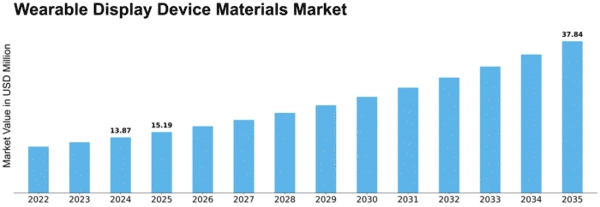

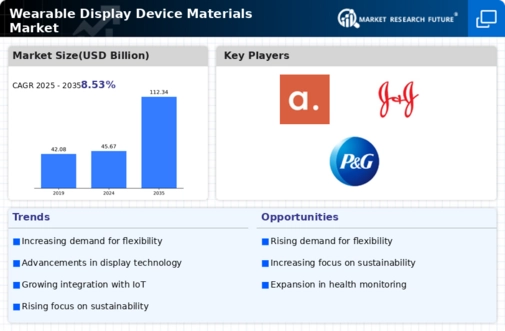

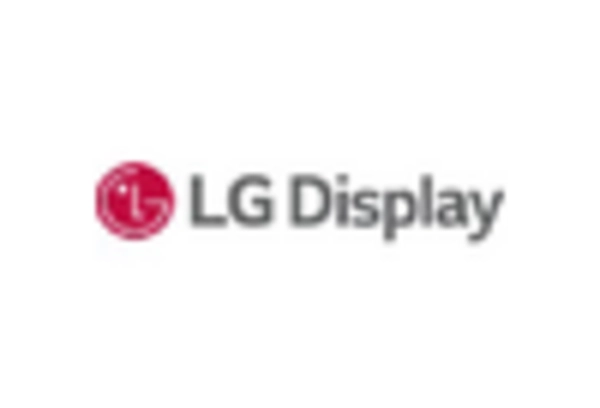
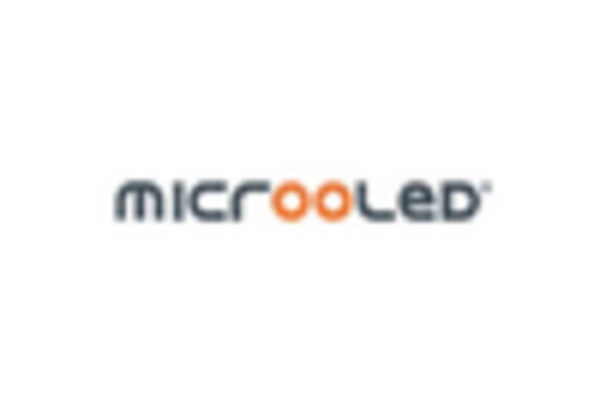
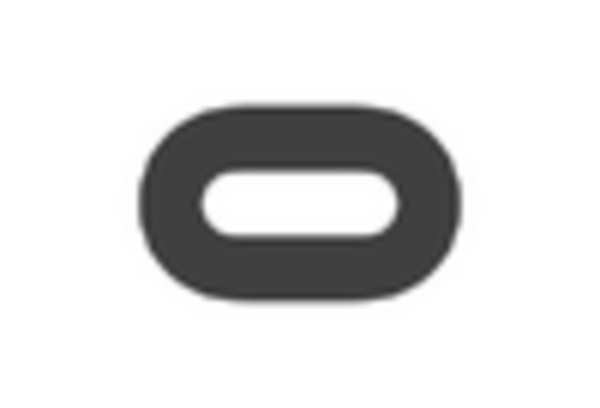

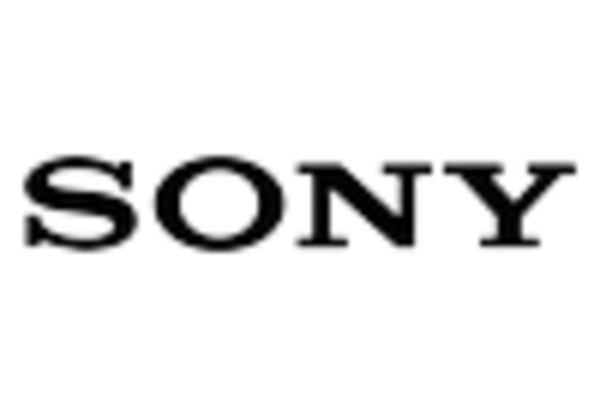









Leave a Comment